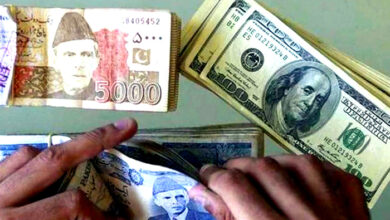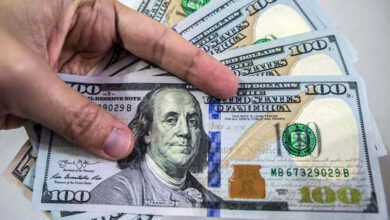The government’s assistance package boosts the KSE-100% by 1.2 percent.

Karachi: Despite a week full of high-profile events, the KSE-100 index ended the week on a positive note. This was despite the geopolitical upheaval and rising commodity prices on the global market.
Last week, the index recovered, closing 567 points, or 1.2 percent higher, at 44,551 points.
“After a steep loss last week due to the Russia-Ukraine situation, the market recovered throughout the week, rising from 43,984 to 44,803 points in response to the Prime Minister’s relief package announcement,” JS Global analyst Wasil Zaman said.
Russia and Ukraine started talking this week, but things quickly went downhill when the talks broke down. This caused global crude oil prices to rise above $114 a barrel on the international market.
Additionally, the announcement of an industrial package sparked purchasing mid-week, albeit the bullish momentum was short-lived as the market fell amid the din of Russia’s military strike on Ukraine and rising commodity prices.
This week, Prime Minister Imran Khan cut the price of petrol and diesel by Rs10 per liter. He said that prices won’t go up until the June budget.
Additionally, he slashed power costs by Rs 5 and eliminated all taxes on the information technology industry, as well as announced a five-year tax holiday for foreign companies to promote investment in Pakistan.
However, the trade deficit increased to $32 billion, an increase of 82% in the first eight months of fiscal year 2021–22, and inflation increased by more than 12% year on year, putting the index under pressure as well.
Fazlur Rehman, a leader of the Pakistan Democratic Movement (PDM), said that the next three days are very important in terms of a no-confidence movement. The Oil and Gas Regulatory Authority raised gas prices, the July-February trade deficit rose 82.2 percent year on year to $31.959 billion, the first cargo under the Saudi oil facility is due to arrive in late March, oil marketing companies’ February sales rose 10%, and the Uzbek president is due to arrive in late March.
Meanwhile, international sales totaled $0.97 million this week, down from $3.24 million last week. Exploration and production ($1.5 million) and banks ($1.4 million) both had sales.
On the domestic front, banks bought the most ($2.4 million) and brokers bought the second most ($2.1 million).
During the review period, the average volume traded was 215 million shares (down 5% week on week), while the average value exchanged was $43 million (up 12% week on week).
The week’s top gainers and losers:
Oil and gas exploration businesses (+402 points), technology and communication (+129 points), fertiliser (+95 points), chemicals (+24 points), and power generation and distribution (+19 points) all contributed positively to the sector.
Whereas cement (-67 points), oil and gas marketing businesses (-12 points), insurance (-12 points), vehicle assemblers (-11 points), and leather and tanneries (-11 points) all contributed badly (-8 points).
In terms of scrip, Pakistan Petroleum (+169 points), Oil and Gas Development Company (+136 points), TRG Pakistan (+117 points), Pakistan Oilfields (+74 points), and Engro Fertiliser (+37 points) were the top gainers in terms of scrip.
Meanwhile, Lucky Cement (-39 points), MCB (-34 points), Pakistan State Oil (-18 points), DG Khan Cement (-17 points), and Dawood Hercules (-17 points) were the biggest scrip losers (-16 points).
Next week’s forecast
In the near future, the market is likely to be nervous because of geopolitical uncertainty and rising commodity prices.
It said that monetary policy meetings, a decision by the Financial Action Task Force (FATF), and an ongoing International Monetary Fund (IMF) review were things to keep an eye on. All of these things would have an impact on the market.
“With the current earnings season, certain sectors and stocks are projected to remain in the spotlight,” the brokerage firm observed. We urge investors to focus only on long-term blue chip stocks. “
The brokerage firm added that the KSE-100 is now selling at a price-earnings ratio of 5.0x (2022), compared to the Asia-Pacific region’s average of 13.5x, while delivering an 8.8 percent dividend yield versus the region’s 2.4 percent.





